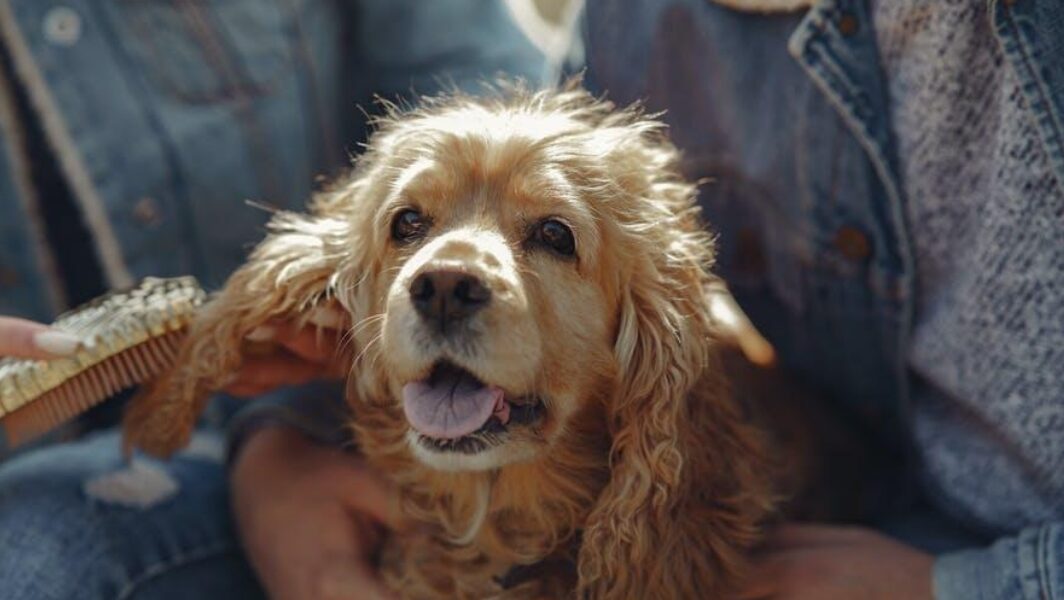Do you find yourself constantly cleaning up hair around the house because of your dog’s moulting? This common issue can be frustrating for dog owners, but there’s good news.
By understanding what causes excessive dog moulting and learning simple ways to manage it, you can keep your home cleaner and your pup healthier. In this article, we will provide practical tips and insights to help you effective dog shedding control.
Regular Grooming
Regular grooming is very important for managing your dog’s moulting. Brushing your dog’s coat daily helps remove loose fur before it falls out around your home. It also keeps your dog’s coat healthy and can reduce the amount of hair they shed.
Different breeds of dogs have different grooming needs. Make sure to use the right grooming tools for your dog’s specific coat type.
Use the Right Tools
Using the right tools is essential for effective grooming. A slicker brush works well for dogs with thick, double coats. For short-haired dogs, a bristle brush or rubber curry brush is more suitable.
Shedding blades are useful for removing loose hair in dogs with shedding coats. Additionally, using an undercoat rake can help reduce the amount of hair that ends up on your furniture.
Balanced Diet
A balanced diet is crucial for controlling your dog’s shedding. Ensure that your dog is receiving the right nutrients in their food to maintain a healthy coat. Foods rich in omega-3 and omega-6 fatty acids are especially beneficial for skin and fur health.
If you are unsure about your dog’s nutritional needs, consult your vet for advice. They can recommend high-quality dog food or supplements that can help reduce excessive shedding.
Supplements
Supplements can be a helpful addition to your dog’s diet to manage excessive shedding. Fish oil supplements, rich in omega-3 fatty acids, can promote healthier skin and fur. Other supplements, like those containing biotin, can also support coat health.
Before introducing any supplements, always consult your vet to ensure they are safe for your dog. Your vet can guide you on the right type and dosage appropriate for your dog’s specific needs.
Regular Baths
Regular baths can help manage your dog’s moulting by removing dirt, dead skin, and loose hair. Use dog-specific shampoos that are gentle on their skin but effective in cleaning their coat. Avoid over-bathing, as it can dry out your dog’s skin and lead to more shedding.
Bathing frequency depends on your dog’s breed, age, and activity level. Generally, dogs should be bathed every 4-6 weeks. Consult your vet to determine the best bathing schedule for your furry friend.
Hydration
Keeping your dog hydrated is essential for maintaining a healthy coat. Make sure that your dog has access to fresh water at all times. Proper hydration helps to nourish the skin and can reduce shedding.
Dehydration can lead to dry skin and increased shedding. Monitor your dog’s water intake to ensure they are drinking enough throughout the day. If you live in a particularly hot or dry climate, big fluffy dog breeds may require extra hydration to keep their coats healthy and reduce shedding.
Regular Veterinary Check-Ups
Regular veterinary check-ups are important for your dog’s overall health and well-being. During these visits, your vet can identify any underlying health issues that may contribute to excessive shedding. Addressing these issues early can help you manage your dog’s moulting more effectively.
Your vet can also provide you with specific advice and preventive measures tailored to your dog’s needs. They can recommend changes in diet, grooming routines, or suggest suitable supplements. Regular check-ups ensure that your dog is healthy and their shedding is kept under control.
Control Fleas and Parasites
Controlling fleas and parasites is essential for reducing your dog’s shedding. These pests can irritate your dog’s skin and cause them to scratch excessively, leading to more hair loss. Using preventative treatments like flea collars, topical solutions, or oral medications can help keep fleas and parasites at bay.
Regularly check your dog for signs of fleas and other parasites, such as excessive scratching or visible pests in their fur. If you suspect an infestation, consult your vet immediately for appropriate treatment options. Keeping your dog’s living environment clean is also crucial for preventing re-infestation.
Environmental Factors
Environmental factors can significantly affect your dog’s shedding. Seasonal changes often lead to increased shedding as dogs lose their old coat to grow new ones. Keeping your home environment clean and free of allergens can help reduce the impact of shedding.
Maintaining a comfortable indoor temperature can also help manage shedding. Dogs may shed more if they are too hot or too cold. Providing a stress-free environment is important, as stress can contribute to excessive shedding.
Manage Stress
Stress can lead to increased shedding in dogs. It is crucial to identify and mitigate sources of stress in your dog’s environment. Common stressors include loud noises, changes in routine, or the presence of unfamiliar animals or people.
To manage stress, create a calm and consistent routine for your dog. Provide them with a quiet and secure space where they feel safe. Regularly engaging in positive interactions and activities can also help reduce stress levels.
Environmental Enrichment
Environmental enrichment is important for your dog’s mental and physical health. Providing toys, puzzles, and interactive games can keep your dog engaged and reduce boredom.
Ensure that your dog receives regular exercise to burn off excess energy. Activities like walks, fetch, and agility training are excellent ways to keep your dog active and healthy.
Dog Moulting Solutions Are Here To Impress!
By following these simple tips, you can effectively manage your dog’s shedding and create a cleaner, healthier home environment. Regular grooming, a balanced diet, proper hydration, and stress management are key factors in controlling dog moulting.
Remember to consult your vet for personalized advice and to tackle any underlying health issues. With the right approach, you can enjoy a happy, healthy dog and a fur-free home.
We hope these dog grooming tips were helpful to you. If you enjoyed it, be sure to check out our blog for more valuable information and resources.








